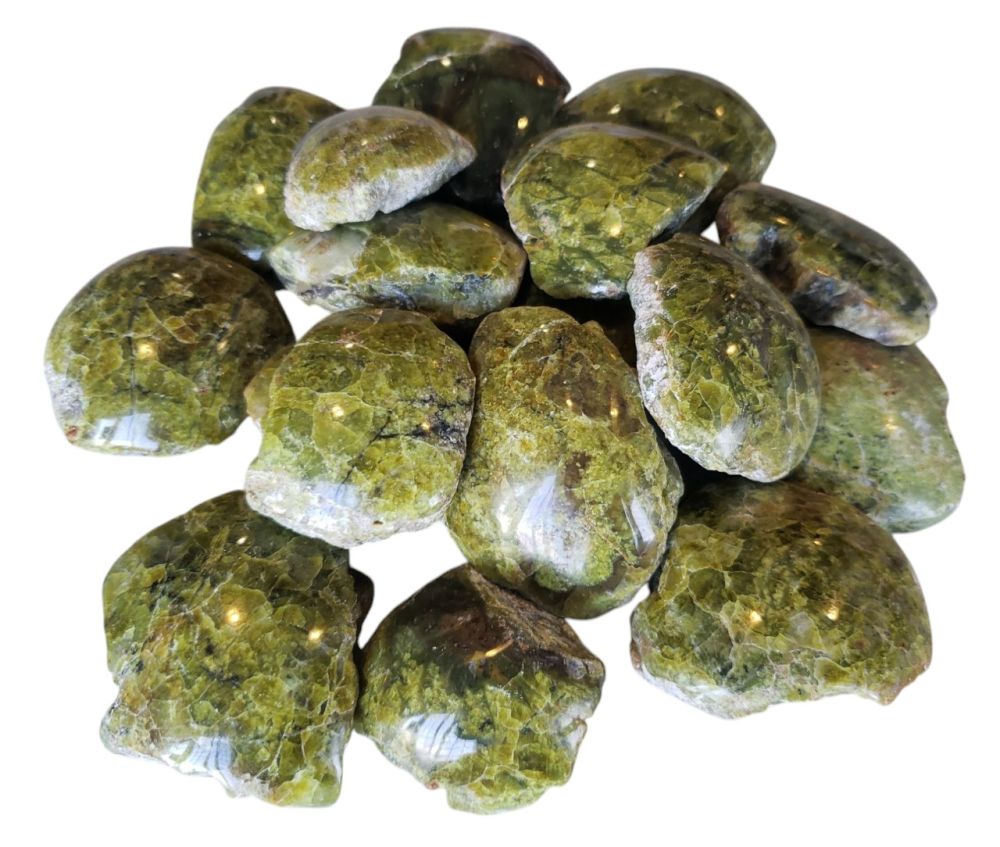We use cookies to make your experience better.
Green opal polished on one side, sourced from Madagascar.
Beautiful little collectibles where one can admire both the rough side and the polished side!
Availability:
In stock
SKU
121892
The mineraloid opal is an amorphous variety of quartz, SiO2·nH2O, hydrated silicon dioxide with a water content of sometimes up to 20%. Opal can be colorless, white, milky blue, gray, red, yellow, green, brown, and black. Often, many of these colors can be seen immediately, caused by interference and diffraction of light passing through minute, regularly arranged openings within the microstructure of the opal, known as the Bragg lattice. These openings are filled with secondary silica and form thin lamellae within the opal during hardening. The term opalescence is used to describe this unique and beautiful phenomenon, although play of color would be a better term. Opal is one of the minerals that can form or replace fossils. The resulting fossils are preserved by collectors. "Opal" is derived from the Old Indian word 'úpala', which means gemstone. One distinguishes between the sparkling precious opals, the yellow-red fire opals, and the ordinary opals. Their physical properties show significant differences. Opal is the official gemstone of South Australia. Opal has been processed as a gemstone since ancient times. Initially, it was used for the manufacture of primitive tools, later for decorative items. Opal was already used by the Assyrians, Babylonians, and Romans. Precious opal is one of the most mysterious stones. Traditionally, it was considered a stone that brings misfortune, especially for people who did not clean the stone properly. The precious opal described by Pliny comes from the deposits of Dubník in Slovakia, which were already being mined at that time. People attributed magical powers to this stone. It helped against melancholy, calmed the nerves, healed the heart, protected against worries, restored vision, and gave the eyes their luster back. Besides naturally occurring opal, opal is manufactured in various ways, both experimentally and commercially. The resulting material can be distinguished from natural opal by its regularity; under magnification, the patches of color are arranged in a "lizard skin" or "chicken wire" pattern. Synthetic opals are further distinguished from natural opals by the former's lack of phosphorescence under UV light. Additionally, synthetic opals are generally lower in density and are often highly porous; some can even stick to the tongue. Two notable producers of synthetic opal are the companies Kyocera and Inamori in Japan. Most so-called synthetic opals, however, are more accurately called imitations, as they contain substances not found in natural opal (e.g., plastic stabilizers). The Gilson opals that are often seen in excellent jewelry are actually imitations made of laminated glass with sprinkled bits of foil.
| Dimensions | Divers |
|---|---|
| Country of Manufacture | Madagascar |











